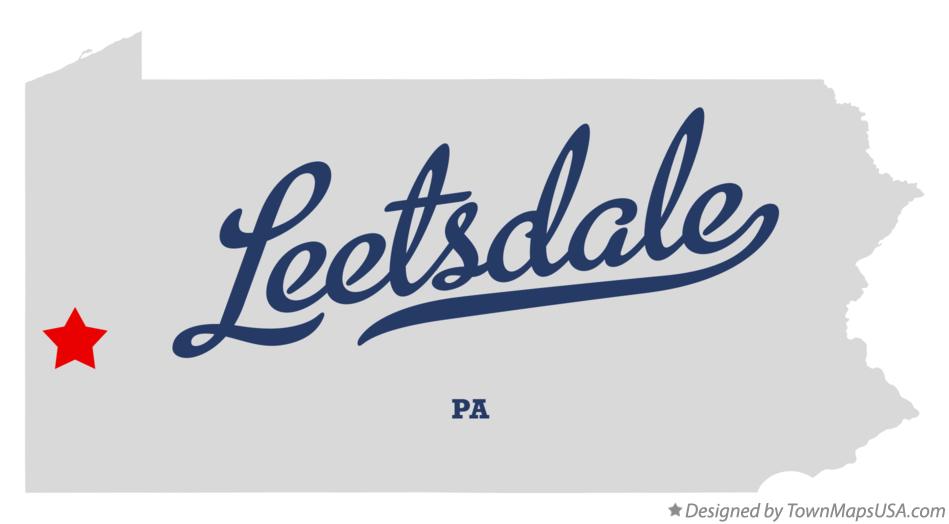In mid-February the Sewickley Herald reported on the appointment of Sewickley Academy Interim Head of School Ashley Birtwell to fill the position on a permanent basis. Included in the reporting was a brief review of the controversy that began last summer involving SA leadership, administrators, teachers, and activist parents.
The report also indicated that SA had engaged Mattingly Solutions of Pittsburgh “to help guide its strategies involving diversity, inclusion and equity moving forward“. According to their LinkedIn page, Mattingly is a “firm providing data-driven, human-centered solutions to improve the workplace experience”.
The Mattingly website includes a blog with a post on why organizations need a dedicated person to oversee their DEI program, and why their firm is the best way to accomplish that end. One paragraph stuck out –
Here’s what a CDO (Chief DEI Officer) should do:
- Build a comprehensive, long term DEI strategy
- Lead organizational change initiatives
- Use data to create and meet DEI goals
- Hold leaders accountable and influence change
- Be willing to ask difficult questions and accept feedback
- Question the status quo and be an ally to others
This sounds an awful lot like the impressive capabilities of the person that the Academy already had in place, in the form of former DEISJ Director LaVern Burton – that is, before last year’s purge.
Should Mattingly make recommendations that dovetail with the above, I wonder how that will be received by SA administration and trustees.
The announcement of Ms. Birtwell’s permanent hire was followed by several news stories in rapid succession, each addressing a unique issue affecting SA and its operations.
This culminated in a series of direct actions and resulting media reports that reached a crescendo of attention not previously realized in the months since the school’s administrative upheaval.
#SewickleySoWhite? Shunned by FAME…
Within a few days of Ms. Birtwell’s accession, the Pittsburgh Post-Gazette reported that the Fund for the Advancement of Minorities through Education (FAME) had suspended its partnership with SA for the next school year, owing to a lack of communication with the school on the future of its DEISJ program.
 Considering that FAME would likely not exist without the forward thinking of the late Ron Gebhardt, who chaired the SA Board of Trustees in the early 1990s, it would seem reasonable that the school would value a continued relationship with respect to its history and those FAME scholars still enrolled there.
Considering that FAME would likely not exist without the forward thinking of the late Ron Gebhardt, who chaired the SA Board of Trustees in the early 1990s, it would seem reasonable that the school would value a continued relationship with respect to its history and those FAME scholars still enrolled there.
More recently, former SA Admissions Director Douglas Leek was much more active in recruiting students for the school through FAME than his most recent predecessors.
Despite this, Mr. Leek was among those jettisoned last year. He has since settled a federal civil rights lawsuit over his termination.
This alleged lack of communication, and perhaps some sour grapes over the terminations last year, could have precipitated the timing of FAME’s announcement as a reminder that all is not well.
Attempts to contact FAME CEO Darryl T. Wiley by email were unsuccessful.
We’re In the Money…
The next story, which appeared February 22, announced a $20 Million donation to the Academy by the Tull Family Foundation, which per their website was founded by Edgeworth billionaire Thomas Tull and his wife Alba.
The school’s press release detailed the programs that the funds will be directed to, including scholarships and the development of an “advanced computer science center“.
Several media outlets based their reporting around what is obviously a boon for SA and its efforts to boost enrollment numbers that Ms. Birtwell has previously claimed were a significant factor in last year’s housecleaning.
The Post-Gazette chose to expand their reporting on the gift by looking at it through the lens of last year’s difficulties, including ongoing investigations by the Pennsylvania Association of Independent Schools, through which SA is accredited. It also speculated on an additional connection between the Tull Foundation and SA trustee Glen Meakem, from whom Mr. Tull purchased his current residence.
The P-G reporter, Andrew Goldstein, also called attention to some of the language on the foundation’s website that at first glance may seem less than congruent when applied to schools such as Sewickley Academy –

Screen capture from home page of Tull Family Foundation website. Click to enlarge.
Additional language on the same page seems like an attempt to clarify, if not contradict, the above assertion –
TFF may initiate grants for projects of interest outside of these established areas. The emphasis upon any one category might vary in any given year and exceptions to these guidelines may occur at the discretion of the Foundation.
With this donation, Thomas Tull is now well established as a significant agent of change in the Sewickley area, especially with regard to education.
- This began with his 2015 purchase of the Walker/Giles estate “Muottas”, changing his mind about tearing it down, and then joining it with other real estate purchases to connect the estate to Camp Meeting Road.
- Not long afterward, the Tull Family Foundation donated $500,000 to put the Village Theater Company over the top in fundraising for what we now enjoy as the Tull Family Theater.
- After an aborted effort to build a new house and develop the vacant land into a “gentleman’s farm”, Mr. Tull sold the property in 2018 to the Quaker Valley School District, and purchased the house from Mr. Meakem.
Without Mr. Tull’s initial purchase, expansion, and eventual sale of the Muottas property, there is likely not a new high school project to consider right now, and the district might still be looking for a suitable location, or giving more serious consideration to other options.
To paraphrase a character in Batman Begins, Mr. Tull has displayed a talent for disruption – whether intentional or not.
While Sewickley Academy the institution stands to reap the benefits of Mr. Tull’s largesse, where future students and the local community at large stand in all this remains to be seen.
Shut Up and Learn
When the initial news broke last summer, I expressed some hope that as the new SA administration evolved they would embrace our nation’s commitment to responsible dissent and the right to petition for redress of grievances, as codified in the First Amendment – although as a private institution they are not bound by that standard.
Those hopes were dashed somewhat this past September, when the P-G reported on changes to both student and employee handbooks –
Some in the school community say the new policies appear to be an effort to quash dissent against the academy and the leadership team that was installed following the firings.
These new policies apparently include restrictions on off-campus behavior and/or expression by not only the student, but parents and other family members as well. Quoting the P-G account –
The policy goes on to say that ‘if the parent’s or other family member’s behavior, communications, or interactions on or off campus (including during school-sponsored events) is disruptive, intimidating, overly aggressive, or reflects a loss of confidence or disagreement with the School’s policies, methods of instruction, or discipline , or otherwise interferes with the School’s safety procedures, responsibilities, or accomplishment of its educational purpose or program, the School reserves the right to dismiss the family or family member from the community‘.(emphasis mine)

Section of Senior School opinion wall. The message in the center was posted by a teacher who was one of those dismissed in the wake of the March 4 protest. Click to enlarge – Georgia Cox via Instagram
This all serves as a lead-in to a February 25 P-G story detailing continued “displeasure with the school’s administration over what they said was a variety of harmful personnel moves, the intentional breakdown of support systems and diversity initiatives, and the silencing of dissenting voices”.
This displeasure took the form of a letter posted in a designated area for student opinion, and included references to the policies enacted in the updated handbooks, painting them as draconian and having a chilling effect on reasonable discourse and dissent –
Our handbook is a manual that threatens students and families for protesting the injustices that occur on campus…Our faculty directory has become a hit-list for targeting any and everybody that upholds the supposed values of the community.
One thing I like to look at when researching school issues is what, if anything, the student-run media has to say. While it was heartening to see the Seventh Pillar resurrected after a hiatus of a few years (the website shows stories back to 2018), it was disappointing to find no new story content since December, and no mention at all of the controversy that has fundamentally changed the school.
Anonymous sources report that the Pillar delayed publication of its pre-spring break issue due to the brewing controversy, and plans to publish next month with full coverage of what has transpired.
This turned out to be a prescient, smart move on their part.
Something’s Gotta Give…And It Did

Student protestors are interviewed by multiple media representatives outside the grounds of Sewickley Academy, March 4 – Click to enlarge. Photo: Tony LaRussa / Tribune-Review
The protest and disturbance of March 3, and the additional protest the following day, brought to a head what had apparently been simmering in the collective conscience of many students, faculty, and staff for the bulk of the past school year, if the website of the student group CARES is any indication.
While nearly every local media outlet reported on the incidents, the Trib/Herald appeared to provide the most complete coverage, including the personnel changes in the wake of the protests. They also provided several pages of coverage in the March 17 print edition.
Academy spokesperson Jennifer Donovan framed the reason for this most recent housecleaning in interesting terms to Trib/Herald reporter Michael DiVittorio –
“What’s most important is to have the right people here,” Donovan said…“We’ll take the time necessary to have the right people.”
It’s easy to chuckle about the literal and figurative meanings of ‘right’ – think Barry Goldwater’s campaign for President in 1964 – but it’s really no laughing matter for either side.
Busy in the Aftermath
The media attention continued the following week, with a March 9 CARES press conference facilitated by 1Hood Media and held in the Oakland section of Pittsburgh. Per CARES representative Georgia Cox, 1Hood approached their group. This effort is reflected in part by additional reporting in publications such as the New Pittsburgh Courier.
This was perhaps in an attempt to amplify the group’s concerns for the benefit of Pittsburgh’s communities of color, from which the area’s independent private schools seek qualified and motivated students – the same talent pool that Mr. Gebhardt likely wanted to attract when he came up with the idea for FAME.
This was followed by a meeting between students and administration on March 10, with dueling press releases issued by both CARES and Academy administration shortly afterward.
The CARES account was brief, and had a tone of cautious optimism blended with continued resolve that the demands they have made will be addressed favorably.
The administration affirmed that all items included in the CARES petition were being reviewed, but also adopted a defensive tone – Ms. Birtwell stated that she was not in the office at the time of the March 3 protest, but accepted the assessment of other staff and would not apologize on anyone’s behalf.
As SA moved into the school’s two-week spring break (cease fire?), Ms. Cox stated that while the potential exists for additional “forward action” by the CARES group, their intent was not to turn the dispute into a “public concern“. She added that the students involved “love the school“, and are hoping that Ms. Birtwell responds positively to their continued efforts.
Public or private, it will be interesting to see what unfolds as classes resume.
Fallout and the Future
Some in the media took the time to collect additional information to deliver a more comprehensive account, and/or reflect on the protest and recent history with a more critical eye.
Post-Gazette columnist Tony Norman used references to Henry David Thoreau and Martin Luther King Jr. among others in painting a picture of the students’ plight and administration’s response –
For those students who sincerely believed that they could appeal to the administration’s conscience on the basis of the shared legacy of an American intellectual tradition, it must have come as a shock to have their petition for redress greeted with nothing but the exercise of raw power and arrogance. What a lesson to take with them when they graduate.
For me this is an adequate, if hyperbolic take on the concept of civil liberties and reasoned discourse, applicable irrespective of the topic being debated.
Sara Schneider of WESA produced a comprehensive report that attempted to address all facets of the dispute from its beginning, include references to other students not aligned with the CARES group, and touch upon the push for parental control over issues they perceive as outside the scope of a traditional education – especially those related to race and politics.
Mr. Goldstein’s reporting in the P-G on the March 4 protest managed to elicit comment from at least one student who was opposed to the protest, as well as a response from Ms. Birtwell that seemed both revelatory and contradictory –
‘The school was known to have a particular political platform, and that’s what we need to be shifting away from,’ she said. ‘What’s most important for our kids is to be encouraged to be independent thinkers.’
So, the school needed to shift away from a “particular political platform“, but that had nothing to do with the initial round of dismissals, if not the second round as well?
 If a significant, vocal component of the school community feels that all that has been done is the replacement of one political platform for another, what has been accomplished?
If a significant, vocal component of the school community feels that all that has been done is the replacement of one political platform for another, what has been accomplished?
Mr. Norman’s column got me thinking about literary references as well, specifically around the activism and passion displayed by faculty, and the loyalty (or not) displayed by students in the face of seemingly intransigent leadership. Dead Poets Society came to mind.
I was also drawn to a book that I was assigned during 8th grade at SA – George Orwell’s Animal Farm. While the novella was inspired by the totalitarianism that arose from the Bolshevik Revolution, it still contains a key sentence that may be applicable to this ongoing dispute –
“All animals are equal, but some animals are more equal than others.”
This reinforces my belief that attempts to impose unreasonable limits on the expression of ideas and/or dissent are unacceptable in a society that embraces individual liberty – even if the likes of Sewickley Academy are not legally required to espouse such liberties, or convey such rights.
Mr. Norman postulated such a response as a “lesson” that administration seemed to be sending to the protesting students –
In real life, dissent must be dealt with quickly and with an iron fist. Schools, especially academically high-performing institutions, are not democracies. Quality comes at a price — your integrity.
Where From Here?
For many of the protesting students, this experience will end with the completion of their senior year in less than 3 months’ time. I asked Georgia Cox, who will be headed to UCLA in the fall, what the CARES group is concerned about for the immediate future, and who is prepared to take up their mantle next year.
Ms. Cox reiterated the group’s desire to work with Ms. Birtwell to resolve their demands as quickly as possible. She expressed concern that other components of the school’s DEI initiatives may be impacted by the controversy, specifically the regional Leadership in Equity and Diversity (L.E.A.D.) Conference, hosted by SA and slated for April 27.
Other related dates of note still listed on the school’s events calendar include –
- April 7 – Middle / Senior School DEI assembly
- April 21 – DEI professional learning for faculty and staff
- May 3 – Home and School Association “State of the School” meeting
- June 9 – Senior School graduation ceremony
CARES has also established a Go Fund Me page to assist those teachers that were fired.
Ms. Cox also stated that succession planning to carry the campaign forward beyond this school year is a “big concern“, possibly hampered by many underclassmen being ambivalent as to their desire to return this fall, including her younger sister.
Cultivating interest in civil liberties and responsible activism may be one way of stimulating continued interest among those students that do return. Resources such as those provided by the ACLU and the Foundation for Individual Rights in Education (FIRE) can be helpful in orienting students to their rights and responsibilities.
Conclusions
♦ It’s important to remember what brought the Academy to this point – largely anonymous communications to the school community and general public asserting that the Academy was remaking itself as a bully pulpit to “relegate academic excellence to a position secondary to amorphous ‘social justice standards’, and further facilitate politicized, ideological education“.
These concerns also included references to Critical Race Theory, which is being conflated with other racial issues by some Republicans to stir up their base with misinformed indignation over something that largely isn’t taught at the K-12 level.
The Pittsburgh City Paper published an overview of this controversy last year that included coverage of the SA dispute, with interviews of both parents and alumni. This included SA parent Dominic Odom –
We’re seeing it as a movement and instead of ‘take back your country,’ it’s ‘take back our school’…But the problem is, it’s not your school. There are 500 other constituents in the school. So five, or six, or 10 individuals had the hubris to believe that they could, in turn, determine what the other constituents would receive as part of their education.
As it happens, students, parents and alumni of Grove City College are in the midst of a similar struggle with their Board of Trustees over how issues surrounding racism will be taught.
I’ve got more to say about this, but it will have to wait.
♦ Perhaps most noteworthy is where comment hasn’t come from – the near-anonymous Sewickley Parents website doesn’t appear to have been updated in several months, and there don’t appear to be any associated social media accounts. E-mail messages left for the organization in recent weeks have gone unanswered.
Concerned Sewickley Parents also haven’t updated their website recently, but there has been some activity on their Facebook page and Twitter feed. This has largely been shares of recent media coverage. They also haven’t responded to attempts at contact.
♦ A March 8 news release from SA Interim DEI Director Derek Chimner appears to make an honest effort to update the community at large on what is happening under his purview. Up to this point, the school’s approach to this appeared murky, clouded by inaction, disagreement on the scope of the mission (i.e. Social Justice), hypersensitivity to responsible dissent, and policies that discourage if not threaten the exercise of the same.
I’m thinking that one cannot strive for Diversity, Equity, and Inclusion while trying to direct and/or suppress discourse about what that will look like.
♦ The media is well attuned to this controversy, and appears ready to leverage considerable resources to report about it, now and in the future.
SA administration have thus far struggled to effectively manage the media attention – one could argue that the public splash concerning Ms. Birtwell’s promotion and the Tull Foundation grant may have acted as a catalyst for students to take more direct action.
The fallout of that action, and the school’s initial response, will likely continue to resonate as the school year winds to a close.
♦ None of this includes any indication that administration is in a hurry to do anything, and may be content to quietly obfuscate until (hopefully?) the student movement gradually fades away.
Let’s hope not – the administration may be continuing to ride a perceived wave of support from the takeover, enhanced by the recent infusion of cash. Losing additional students is something that Ms. Birtwell has stated that she wants to avoid.
♦ I continue to wonder what constitutes the Academy’s long game – considering that other independent private schools in the Pittsburgh region compete for students from the same talent pool, could it be that SA is trying to remake themselves as a destination for those seeking a “traditional” (read “conservative”) education, devoid of what are perceived as “distractions” to the educational process?
The Trustees of Grove City College made their intentions clear in response to their own controversy, quoted by the P-G story referenced above –
Fidelity to the College’s founding principles secures GCC’s unique place as an oasis in American higher education. In particular, the Board categorically rejects Critical Race Theory and similar ‘critical’ schools of thought as antithetical to GCC’s mission and values.
The problem with an oasis is that lingering at one too long may not adequately prepare one for the struggles in the “desert” – not to mention that the appearance of such an oasis could be just a well-crafted, PR-infused mirage.
♦ The school’s seemingly insular approach and attitude has, up to this point, made them appear dismissive, bureaucratic, and aloof. They appear to approach these issues as if they must stay within the school ‘community’, and seem to bristle when they don’t. Some of the policies being disputed reflect this.
The students say they love their school, and avoided taking these steps as long as possible. However, they also have the ear of local media, activists, and interested members of the community at large.
They, like myself, realize that despite Sewickley Academy’s private, independent structure, the actions of the Academy in managing their inner turmoil may reflect upon all of us who choose to live in this area.
Enjoy the approaching springtime.


































Pingback: Endangered History – Six Degrees of Real Estate Separation | John Linko
Pingback: Endangered History – Six Degrees of Real Estate Separation | John Linko
Pingback: Sewickley Academy – Securing the Future, Calculating the Past | John Linko
Pingback: October Shorts – Books, Babies, Backpedaling, and Basketball | John Linko